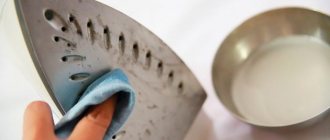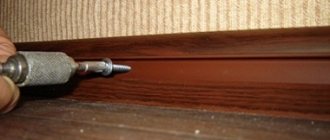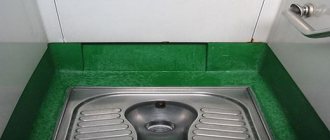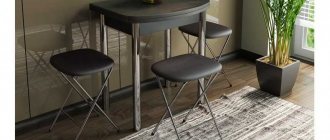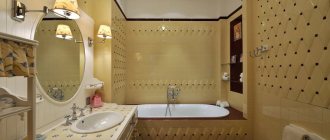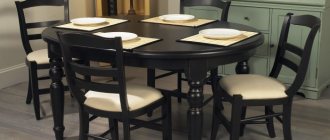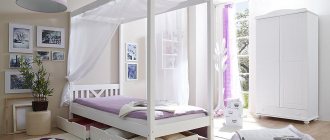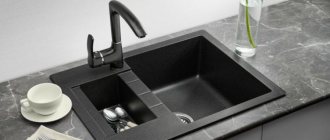Main types of toilets
Toilets can be divided into three main types:
- suspension;
- attached;
- floor.
These types are designed for installation in rooms of different sizes, and are distinguished not only by reliability, but also by price.
Suspension
In small rooms, as a rule, wall-hung toilets are installed. These toilets are good because the flush tank and pipelines are mounted separately from the toilet. The suspended type is noticeably shorter than the floor-mounted one, but requires more careful installation. The thing is that the pipelines and the drain tank are hidden in the wall, and these elements must be assembled as reliably as possible. A wall-hung toilet looks much more aesthetically pleasing than a floor-mounted or wall-mounted one. A wall-hung toilet is also much easier to keep clean. Many people think that a wall-hung toilet is an unreliable design, but this is far from the case. The wall-hung toilet can withstand a weight of 400 kg, and in terms of reliability, everything is in order. The model can be safely chosen for any bathroom. Installing a wall-hung toilet is much more expensive than installing a floor-mounted plumbing fixture.
Floor
The most common type is floor-mounted toilets. These devices are optimal not only in terms of design, but also in terms of price. Floor standing toilets are very easy to install and maintain. These plumbing devices are also divided into several types:
- vertical;
- oblique;
- horizontal.
These toilets differ from each other in the design of the drain outlet. Vertical toilets are usually used in private housing construction, which are equipped with individual sewerage. In multi-storey buildings, toilets with horizontal outlet are used. Toilets with an oblique outlet are designed for older houses. To choose the right toilet, you first need to find out for sure what type of drain outlet you have.
Pristavnoy
Attached toilets also significantly save space, and are something between a floor-mounted and wall-hung toilet. The best choice for your home. The connections for the attached toilet are hidden in the wall, and the flush cistern is located separately from the toilet. An attached-type plumbing product is not hung on the wall, but is attached to the floor. Installation of an attached toilet requires special attention from a master plumber, since troubleshooting problems in the pipelines or in the cistern may entail the dismantling of decorative panels, which is extremely undesirable. The cost of these plumbing devices is noticeably higher than that of their floor-standing counterparts.
Flush
In order not to clean the structure with your own hands, the designers came up with an entire drainage system designed to remove waste products and clean the surface. It should be noted that there are several variants of different designs of this technical solution that differ from each other.
Two main types of water drainage
Direct drain
- This flushing system is considered the simplest, and its price is minimal. It was developed very first and is still used today.
Some designs provide direct drainage from different points
- It is worth noting that this water supply option is excellent for structures without shelves. It is also often used for products with a slight slope. However, recently manufacturers have been leaning towards other models.
- The fact is that some toilet designs also spray water during such a flush, especially if there is an obstacle in its path in the form of waste products.
Advice! You should choose such systems only if you want to save money. More expensive models are equipped with other water supply options that are much more efficient.
With proper swirling, the water washes out even the most inaccessible places
Eddy drain
It’s worth saying right away that the instructions for connecting this type of toilet are practically no different from the standard manual. However, the design of the ceramic rim itself presupposes the presence of a certain number of holes and drains, which, when draining water, twist the stream in a spiral, spraying it. This way, moisture washes the entire surface and removes waste more effectively.
Modern masters believe that it is best to purchase a toilet with a horizontal shelf and a flush that fully satisfies all user needs. However, such products usually have a high cost because their manufacturing process is difficult and involves a high level of defects.
Advice! It is very difficult to check such a drain on site. However, popular manufacturers equip sellers with appropriate video materials and other manuals that show the principle of operation.
Choosing the right toilet greatly simplifies the operation process
Selecting a toilet by type of material
All modern toilets are usually made from two materials:
- earthenware;
- porcelain.
Porcelain plumbing fixtures are the most popular, but also the most expensive. Porcelain toilets are the most practical, and they are not as susceptible to contamination as earthenware products. Porcelain has a smoother surface, which is practically free of shells and microcracks. It is the smooth surface that prevents the growth of germs and bacteria. Porcelain products are very easy to maintain and keep clean.
Earthenware toilets are less expensive and require more careful maintenance. The thing is that faience has a more porous structure than porcelain. Therefore, earthenware toilets need to be serviced more often, since all kinds of dirt quickly appear on them. In a store, it is very difficult to determine by eye whether the toilet in front of you is porcelain or earthenware. You can get comprehensive information from a consultant in the store, who can even provide you with a technical passport for the product, which will indicate what material the toilet is made of. It is also easy to determine the material based on the price of the product.
Deciding on the material of manufacture
On the windows of plumbing stores you can find toilets made of the following materials:
- Faience;
- Porcelain;
- Steel;
- Cast iron;
- Decorative rock;
- Plastic.
Let's consider the main nuances of each specified material.
Earthenware toilets
Toilets made from earthenware are the cheapest and most popular. Faience is a type of white ceramic with a finely porous structure. To reduce the hygroscopicity of the material, that is, so that the porous material does not absorb moisture much, the surface of the earthenware is covered with special enamel. The color of the enamel can be white, beige, turquoise, yellowish - this does not affect the technical performance.
The disadvantage of earthenware toilets is that during many years of use, the protective glazed enamel can wear away under certain mechanical stress. When the enamel wears away, moisture begins to be abundantly absorbed into the finely porous structure of the earthenware, which leads to a general decrease in the strength of the plumbing fixtures. Simply put, the toilet can burst under the weight of an obese person. However, you shouldn’t be scared right away; a toilet made of earthenware can honestly serve its 10-15 years.
Porcelain toilets
Porcelain, used for the manufacture of sanitary ware, as well as earthenware, is made from white types of clay. However, in the production process, additional quartz and feldspar are introduced into white clay varieties, which, under the influence of a certain temperature, makes it possible to obtain a material that is less porous and more durable than earthenware. Porcelain toilets are also coated with enamel glaze, but its abrasion occurs much more slowly.
If, during many years of use, the enamel has been slightly worn out, as a rule, due to the high strength and low hygroscopicity of porcelain, this does not lead to destruction of the plumbing fixtures. The price of porcelain toilets is on average 30-50% higher than the cost of faience plumbing. Approximate service life is 20-25 years.
Steel toilets
The material used for the manufacture of this plumbing fixture is stainless steel, which is a priori incapable of absorbing moisture and to the smooth surface of which various impurities practically do not stick. Another advantage of steel toilets is their high strength. One might even say - anti-vandal strength, which makes the use of steel toilets very popular in public, crowded places. The warranty period is practically unlimited, but the price for this hygiene item is usually higher than the cost of even porcelain toilets.
Cast iron toilets
Cast iron toilets are relatively rare in the assortment of plumbing stores. This is explained by their low popularity. They are heavy, bulky and have a relatively short service life. Although cast iron is protected from rust and corrosion by enamel applied to its surface, cast iron is still a brittle metal. Typically, these toilets are used in public places with a small number of people.
Fake diamond
Artificial stone is a polymer material that combines the visual appeal of natural stone with the best aspects of plastic. It has:
- high strength, resistance to mechanical stress, durability;
- relatively light weight;
- non-porous structure, which ensures hygiene (artificial stone does not absorb odors and is easily cleaned of dirt);
- more affordable price than natural stone.
A natural stone
Toilet bowls can be made from natural marble; polishing gives the marble surface a smoothness, due to which dirt does not linger on it and microbes do not multiply. This is a very expensive, elite option with a presentable appearance .
Heavy weight, difficult installation, and fragility are the disadvantages of such products, along with the high price.
Plastic toilets
Plastic toilets are mainly made from acrylic. There are models in which there is a multi-layer, fiberglass-reinforced structure. They are distinguished by their low dead weight, simple installation and low cost. Disadvantages include the low strength of the product, susceptibility to temperature changes and a relatively short service life. People often prefer to buy a toilet made of plastic for installing it in the country.
Selection according to bowl shape
When choosing a toilet for your home, you should pay attention to the type of structure of the bowl. The list of these types includes:
- bowl with “shelf”;
- bowl with vertical drain (funnel-shaped);
- bowl with offset drain.
A bowl with a “shelf” has come to us since Soviet times, but such sanitary products can still be found in stores. The advantage of such a toilet is that it practically does not splash when flushing.
The funnel-shaped bowl is by far the most popular. These toilets are very easy to maintain and very effective in terms of hygiene. The drain neck of a toilet with a funnel-shaped bowl is located in the center, which ensures an unobstructed and powerful flush. The only drawback of this bowl structure is that when draining, a large amount of splashes is formed.
Also in demand are plumbing products that have an offset (oblique) release form. It is this bowl geometry that toilets with an anti-splash system are equipped with. This system allows you to minimize the formation of splashes - due to the shape of the bowl, and due to a special small protrusion that rationally distributes the flow of water when draining. The absence of splashes is also explained by the fact that the water level in toilets with an anti-splash system is at a sufficient distance from the body.
Flush type
Flushing in modern toilets also varies. You should also pay attention to it when choosing. Flushing can be done:
- horizontal way;
- direct vertical method;
- in a circular vertical manner.
The horizontal flush system is a fairly old system, and the water supply in such a system is carried out from a single point. This type of flush is not very effective because it does not flush the entire toilet bowl. The shortcomings of such a flush have to be corrected with a brush.
Direct vertical flushing is the most modern, and is carried out along the entire perimeter of the bowl. Water washes the entire surface of the bowl with uniform pressure, since the drain holes are evenly distributed - under the rim.
The most advanced type of flush is the vertical circular one. This type is good because when flushed, a water vortex is formed, which more effectively cleans the entire surface of the toilet bowl. This vortex is formed using a clever arrangement of drain holes, which are also located under the rim, along the entire perimeter of the bowl.
Today you can find rimless toilets on sale, which have their pros and cons. This design of plumbing products is good because such toilets are easy to maintain. There is simply nowhere for bacteria and dirt to accumulate on such a toilet, but there is one thing. A rimless toilet has only one point from which water is supplied for flushing. Therefore, the quality of the drain is questionable. Also, a rimless toilet has increased splashing. Such devices require more careful adjustment of the fittings, which will minimize the amount of splashes, and without compromising the quality of the flush itself.
Toilet device
Any toilet consists of a bowl and a drain system.
How it works:
- The reservoir contains water for subsequent rinsing of the bowl.
- Activating the flush with a lever raises the flap valve, allowing a predetermined amount of water to flow in through the holes located under the toilet rim.
- The S-shaped bend of the sewer adapter serves two purposes, the main one of which is the direct outflow of liquid from the device. The second is to prevent sewer gases from flowing back into the room.
- When the tank is emptied, the water causes the float to lower, simultaneously pushing the contents of the bowl into the waste pipe.
- After this, the valve again starts drawing clean water to fill the tank to the normal level.
Tank drain device
Water from the supplied pipe flows through a hose into the tank, which in basic models is the tank itself. There are two mechanisms inside: one is responsible for receiving water, the second is for draining.
- The filling system accumulates water to a manually determined or structurally acceptable level.
- The float mechanism (in older models it is made in the form of a bubble or pear) determines whether the water has reached the mark.
- When the water level in the tank exceeds the permissible level (according to GOST - 20 mm below the overflow), the float valve blocks its inflow.
- The flushing system comes into operation when the flush button is pressed. The mechanism is usually combined with transfusion insurance.
- Pressing a button opens the shut-off valve, allowing water to enter the toilet bowl through special drain holes.
Types of covers
Toilet lids are an accompanying device, but the convenience of staying in difficult times depends on their choice. Lids can be divided into two types:
- universal;
- model.
Universal lids fit all types of modern toilets. Model covers are developed specifically for a specific type of plumbing product. Toilet covers not only perform hygienic functions, but also make using the toilet more convenient. The toilet lid consists of two parts - the lid and the seat. These parts carry different functional loads. The cover itself prevents the spread of moisture and foreign odors, and the seat is designed to provide maximum comfort. Toilet lids can also be divided into several types to suit different types of users. The list of these types includes:
- standard covers;
- baby caps;
- special covers.
Standard toilet lids can be used by people of all ages. Special covers are made for people with disabilities. Also, special toilet lids can be adapted for camping conditions. Children's toilet lids are reduced in size because they are designed for children. Baby lids come not only in small sizes, but also in folding sizes.
Toilet lids can be made from different materials. The most common material is plastic, but also used:
- duroplast;
- tree;
- polyvinyl chloride and so on.
Today you can find toilet lids on sale that are equipped with a lot of useful functions. The list of these functions includes:
- water heating;
- automatic flushing;
- microlift
More expensive types of toilet lids are treated with a special antibacterial coating, which prevents the accumulation of dirt.
Specifications
Before purchasing a plumbing fixture for an apartment, study its technical characteristics.
Water supply method
Toilets may have a side or bottom supply. In the first case, it will be cheaper, but in the second, the models operate without noise when filling. Their hose is practically invisible.
Varieties of plums
Manufacturers produce 2 types of flush devices:
- back circular;
- direct
A reverse circular drain can be called a shower or ring system. The movement of water occurs along a kind of annular space and evenly descends over the entire surface of the bowl. The system operates almost silently, but costs more than direct flush toilets. However, with regular use, the drain holes become clogged with salt deposits over time.
With a direct drain, the water is directed directly from the drain hole in the tank to the wall of the bowl. Often such a system is called horizontal or cascade. Its advantages include washing away all impurities in the center of the bowl in one go.
The disadvantage is the use of a brush to clean the inside of the device, which is not affected by the water flow.
Presence of anti-splash
An anti-splash in a plumbing fixture is a drain hole with a narrowed shape. It is located at the bottom of the toilet and is shifted depending on the axis of symmetry to one of the sides. In this case, the level of the water column in the hole is significantly reduced.
Along the contour there is a circular rim, which additionally performs compensatory functions. Many toilets are labeled with information about the presence of an anti-splash feature.
Toilet with installation
Many users do not quite understand what a toilet with installation is. These toilets are a type of wall-hung sanitary fixtures, complete with a wall-mounted structure. It is on this structure that the toilet itself and the flush cistern are installed, and all this is covered with decorative panels. This design is often chosen by clients during major renovations. Toilets with installation can be made from both porcelain and sanitary ware. Basically, these products have a horizontal outlet and are equipped with a dual flush mode. Also, wall-hung toilets with installation are equipped with an advanced lid, which is equipped with a microlift. Depending on the model, the toilet lid may have additional functions.
How to choose a form
Toilets have different shapes. The dish-shaped bowl has a drain hole shifted forward. There is a small depression in the space where the water moves. When using a plumbing fixture, the drain liquid first enters it and is then washed off by the pressure of water released from the tank.
When installing this type of device, the functioning of the drain tank is additionally adjusted and the water supply is regulated so that excess pressure does not lead to turbulence in the water flow and flushes well.
The funnel-shaped bowl has a drain hole located almost in the center. A larger amount of sewage ends up in the drain and is finally eliminated by draining the water.
In this model, flushing occurs without splashing. The visor bowl is distinguished by a sewer drain opening close to the front with an oblique outlet. All impurities fall down the wall and are washed away with water from the tank without splashing.
Types of toilets depending on the mounting method
Most often, in search of an answer to the question of which toilet is best to buy, the consumer takes into account the layout and area of the bathroom.
In this regard, you should know that two types of toilets are produced:
- The floor-standing version can be called a classic, as it is the most common and popular toilet. The models have a base in the form of a leg, which smoothly turns into an expanded bowl. The base is fixedly mounted to the floor; anchor bolts and clamping nuts are used as fastening elements. Some models are equipped with an attached skirt that completely covers the lower part of the device. This element allows you to create protection for the lower part of the base from various contaminants, which greatly facilitates the cleaning process. You can also find floor-type models that are installed in the corner between adjacent walls. This should be taken into account when deciding which floor-mounted toilet to choose.
- Wall-hung toilets are an excellent solution for a small bathroom. Such models allow you to save some space in a small room. This option does not have a base in the form of a leg and is attached tightly to the wall.
- A little less common are attached toilets, which are products with a base leg that can be placed close to the wall. The cistern of such models is located in a pre-equipped niche.
Choosing a toilet size
To choose the right model that will suit all parameters, you need to go to the store, taking a tape measure with you. Before doing this at home, you need to measure the distance between the door and the back wall. When choosing a model, you need to take into account that the tank will protrude slightly back, extending beyond the outlet. In addition, you need to maintain a distance of 60 centimeters between the toilet and the door.
When choosing a toilet, you need to take into account the distance to the walls, because if it is less than 30 centimeters, then there is simply no room for your knees.
To avoid physical discomfort when directly using the toilet, it is necessary that its size, height and shape do not create an uncomfortable position for your legs and pelvis. According to the standard, the installation height of the toilet is 400 mm.
Models for primary schools or kindergartens differ in seat height. It is difficult for children to climb onto high toilets, so there are special ones for them, the height of which is only 30 centimeters. To avoid splashing while using the toilet, you need to take into account the place where the water mirror will be located. It is better if the water is located near the front wall rather than behind.
The product can be fastened in three ways: fixing to the floor using screws and dowels, fastening to taffeta with anchors, installation using epoxy glue.
Kinds
Based on the installation method, there are floor-mounted, wall-mounted (mounted) and flush-mounted toilets. Among them there are their own varieties.
Floor-standing
These are products, the lower part of which rests on the floor; old models require hollowing out a hole (socket) in the floor, into which the base of the product is recessed, followed by cementation. If the floor is wooden, the nest under the base is placed above the floor surface and is made of reinforced concrete or plywood.
Installing such products is a troublesome and time-consuming process. Today, the plumbing products market mainly offers more advanced, simpler and easier-to-install models with a pedestal attached to the floor with screws.
The main parts of a floor-standing toilet are the base, bowl and cistern. Depending on how the tank is located relative to the bowl, there are several varieties.
Compact
In models of this type, directly behind the bowl there is a shelf (solid or attached), on which the tank is installed, the drain holes of the tank and the body are hermetically joined.
Advantages:
- take up little space;
- do not make much noise when draining water;
- are as easy as possible to install.
Compact toilets are most often found on the modern market.
With separate tank
In these models, the tank is installed significantly higher than the bowl and is connected to it by a pipe.
The main advantage of such models is the creation of strong water pressure by accelerating the flow when falling from a height. Cons: They are more difficult to install and are noisier.
Today, products with a high suspension tank are produced in small quantities, they are sometimes called retro models, and are specially stylized as antique. These are quite expensive designer products for everyone. Occasionally you can find budget Soviet-style models in stores, most of which are characterized by low quality fittings and tanks.
Monolith
If toilets with a separate tank are gradually becoming a thing of the past, then monoliths are the latest development, a novelty that is not yet widely represented on the market. They combine the bowl and tank; due to their low-profile design, these models are the optimal solution for children and people with disabilities.
The advantages of monoliths also include:
- compact dimensions, minimum space occupied:
- ease of maintenance due to the absence of joints, cracks, corners where dirt gets clogged;
- protection against leaks due to the fact that there are no connections;
- reduction of water consumption (possibility of using full or partial drainage);
- impossibility of overfilling the bowl.
The main disadvantage is that if any part is damaged, you will have to replace the entire toilet.
Mounted
Wall-mounted models do not have a base, the bowl is attached to the wall using a special installation system (rigid steel frame), and the entire drainage system along with the tank is hidden in a false wall.
Wall-hung toilet cisterns are made of plastic, they are small in width and depth, equipped with a push-button flush system, the panel with the button is brought out through a window in the false wall. In most models, you can dose the volume of drained water.
Advantages:
- take up little space, this is a particularly good solution if there is a niche in the wall;
- hard-to-reach places for cleaning are hidden;
- look as aesthetically pleasing as possible and do not spoil the design;
- draining water is accompanied by minimal noise;
- despite their apparent fragility, they can withstand significant loads.
The main disadvantage of mounted models is the complexity of installation, which will almost certainly require the involvement of specialists.
There are also built-in (attached, wall-mounted) products, also with a hidden drainage system; they can be either wall-mounted or floor-mounted. Find out more about which wall-hung toilet with installation is best to choose.
Mortise
Flush-mounted or Turkish toilets, also known as Genoa bowls, are well known to any visitor to public toilets. They do not have a base; their bowl, usually of a large area, is mounted at an elevation above the floor.
For public places with high traffic, this is the optimal solution:
- the bowls can withstand significant loads;
- are as hygienic as possible, since they do not sit on them.
In apartments, such models are used extremely rarely, but in private houses, floor bowls of a smaller size are sometimes installed than in public toilets. They are equipped for drainage not with a tank, but with a large-diameter flush tap, which creates significant water pressure.
Main selection criteria
In addition to price, there are many other criteria that influence the choice of a given product. To find out which toilet is better, you need to take into account certain criteria. What to look for when choosing a toilet:
- easy connection to water supply or sewer system;
- correct dimensions to ensure the most convenient use of this item;
- reliability and ease of tank repair;
- attractive and interesting design (it is advisable not to overdo it);
- Preferably no splashes during use.
There are also a number of important requirements for the toilet:
- according to the standard, the toilet must withstand a load of 200 kg, however, modern products (including wall-hung ones) can withstand up to 400 kg, and some manufacturers claim that their products can withstand up to 800 kg of static load;
- As a rule, 6-8 liters of water are used per flush. Today, there are dual flush toilets (3 and 6 liters), as well as intermittent flush options. In addition, there are models with mechanical (push-button) and electronic (contactless) drain systems;
- It is important that the toilet flushes well. Thus, the effectiveness of flushing feces, paper, and other waste is checked, as well as the degree of rinsing of the inner surface of the bowl.
Modern stores offer many different models, which have many differences, and it is worth talking about them in more detail. Expert advice will help you make your choice. Watch the video review on how to choose the best toilet for your apartment:
Which price category should I choose?
Before choosing a good toilet, you need to study their price category. The cost of these products depends on the type of device, the quality of the material, the type of bowl, the presence of additional functions, the country of manufacture and the quality rating in a given price category. For example, plumbing fixtures made of ceramics with the same characteristics will cost differently depending on the manufacturer.
All models presented on the modern market can be divided into 3 price categories:
- Economy class. Almost all Russian products belong to this category. Their cost starts from 2,000 rubles. At the same time, it is impossible to call all domestic toilets of low quality, since their price is reduced largely due to the absence of customs duties and transportation costs. Budget toilets also include products from China. Economy class devices are installed most often in offices, educational and medical institutions. The leading companies in the ranking are Santek, Keramin, IDDIS, and Sanita.
- Middle price segment. This is the optimal choice for apartments and country houses. A small bathroom in a standard apartment requires the installation of a compact toilet. The main countries producing sanitary ware in this price category are Poland, the Czech Republic, Finland and Spain. The cost of quality products in the middle class starts from 10,000 rubles. The leaders in the ranking are such manufacturers as Cersanit, Jika, Roca, Vitra.
- Luxury products. Toilets for real estate of the appropriate class - luxury apartments and country cottages. These are high quality multifunctional devices from Germany, Sweden and Austria. The initial cost ranges from 20,000 rubles and can reach hundreds of thousands. The best manufacturers are companies such as Duravit, Geberit, Jacob Delafon, Villeroy & Boch, Laufen.
Choose the right toilet based on the characteristics of the bathroom, financial capabilities and personal preferences. Only you know which option is best for you.
Types of tanks
Depending on the type of fastening, the following types of drain tanks are distinguished.
- Upper. They are located directly above the toilet. Typically, models that are designed for this type of installation have a special seat and mount for the tank.
- Lateral. They are located on the side or above the toilet. The devices are connected to each other by a pipe.
- Hidden. They are built into the wall behind or to the side of the plumbing fixtures. When in use, they are not visible at all, since they are hidden by the finish.
Based on the type of drainage, tanks are divided into 4 types.
- Lever. The oldest type. Draining is carried out using a lever. In order to wash off the water, it must be pulled up.
- Push-button. They have a button at the top. To flush, you need to press it. Some models have 2 buttons at once - one for intensive draining, the other for weaker draining.
- With a chain. This design is used for side mounting. Strictly speaking, tanks with a chain are also lever-type. After all, the chain is attached precisely to the lever. This was done through a special guide. It facilitates the movement of the chain and prevents it from slipping.
- Sensory. They have a photosensor. To flush, just bring your palm to it. After this, the sensor will work and turn on the electric drive, which will open the tank valve.
Types of toilet models
Comparing these models, it becomes clear that floor-standing toilets are much easier to install than wall-hung ones. Therefore, most people who want to know how to choose a good toilet give preference to floor-standing models.
What types of toilets are there by design type:
- Monoblock - a design in which the tank and bowl are fused together. The advantages of such a product include the absence of the risk of leaking connections and a harmonious appearance. The disadvantages of a monoblock include the need for a large space and a complete replacement if the tank or bowl fails.
- A toilet combined with a bidet is suitable for owners of a large toilet room. The consumer can choose one of the ready-made sets, made in one design, which best fits into the interior of the restroom.
Types of bowl-shaped products:
- Disc-shaped - on the one hand, an outdated model, on the other hand, it is ideal for pets who use the toilet. But dish bowls spread the smell very quickly.
- Funnel-shaped - have a steep descent that instantly cleans the bowl, but when draining, the water splashes heavily.
- Visor - in this option, the water leaves slowly, but at an angle, which means that nothing will linger in the bowl.
Types of products by type of tank fastening:
- Cast iron tank on a long pipe. It is made according to a model from the times of the USSR, but modern versions have the latest equipment, with which the mechanism is almost impossible to disable (unless this is done on purpose).
- Plastic hanging tank. It differs from the previous version in that it is attached using a cuff.
- A tank that is attached directly to the bowl. Water is supplied from below or from the side. This model is considered the most reliable.
Overhead cisterns are now used mainly only in public toilets, because:
- it greatly spoils the aesthetics of the room, regardless of the material from which it is made;
- due to the tank located on top, the space of the toilet is spent very uneconomically, since very often in small apartments shelves or cabinets with hygienic or sanitary products are installed above the toilet;
- such a tank increases the speed of water during flushing, making life easier for cleaners.
That is why for private houses or apartments they mainly use kits in which the tank is located at the bottom.
Types of toilets by type of material:
- Sanitaryware - due to the porous structure, their durability is no more than 40 years, but the low price attracts consumers.
- Porcelain - has a less porous structure, which absorbs less odors and dirt. They cost more than sanitary ware, but will last longer - 50-60 years.
- Precious metals – gold and silver. Exclusive options for the rich who are not satisfied with ordinary ceramic or porcelain closets.
- Stone - they look very beautiful and monumental, but natural stone instantly absorbs odors and dirt, which makes it almost impossible to use the product for its intended purpose. In addition, a stone toilet requires special care and expensive restoration. But it is possible to make a toilet from artificial stone.
- Steel - a stainless steel toilet will be an inexpensive, very durable and at the same time original option. Most often installed in public toilets.
- Plastic (acrylic) - lightweight plastic meets all hygienic requirements and strength criteria, but it requires special care: do not use cleaning agents with an abrasive composition, do not use hard brushes, exposure to high temperatures is contraindicated, and is not resistant to scratches and mechanical damage. But it looks very beautiful.
There are also technologically advanced toilet options that can remove odors, heat the seat, rinse, auto-flush, blow-dry, and even play a recording of the sound of flushing. For user convenience, an anti-splash system can be used in the toilet, as well as antibacterial and anti-dirt models with a silver-plated or water-repellent coating.
